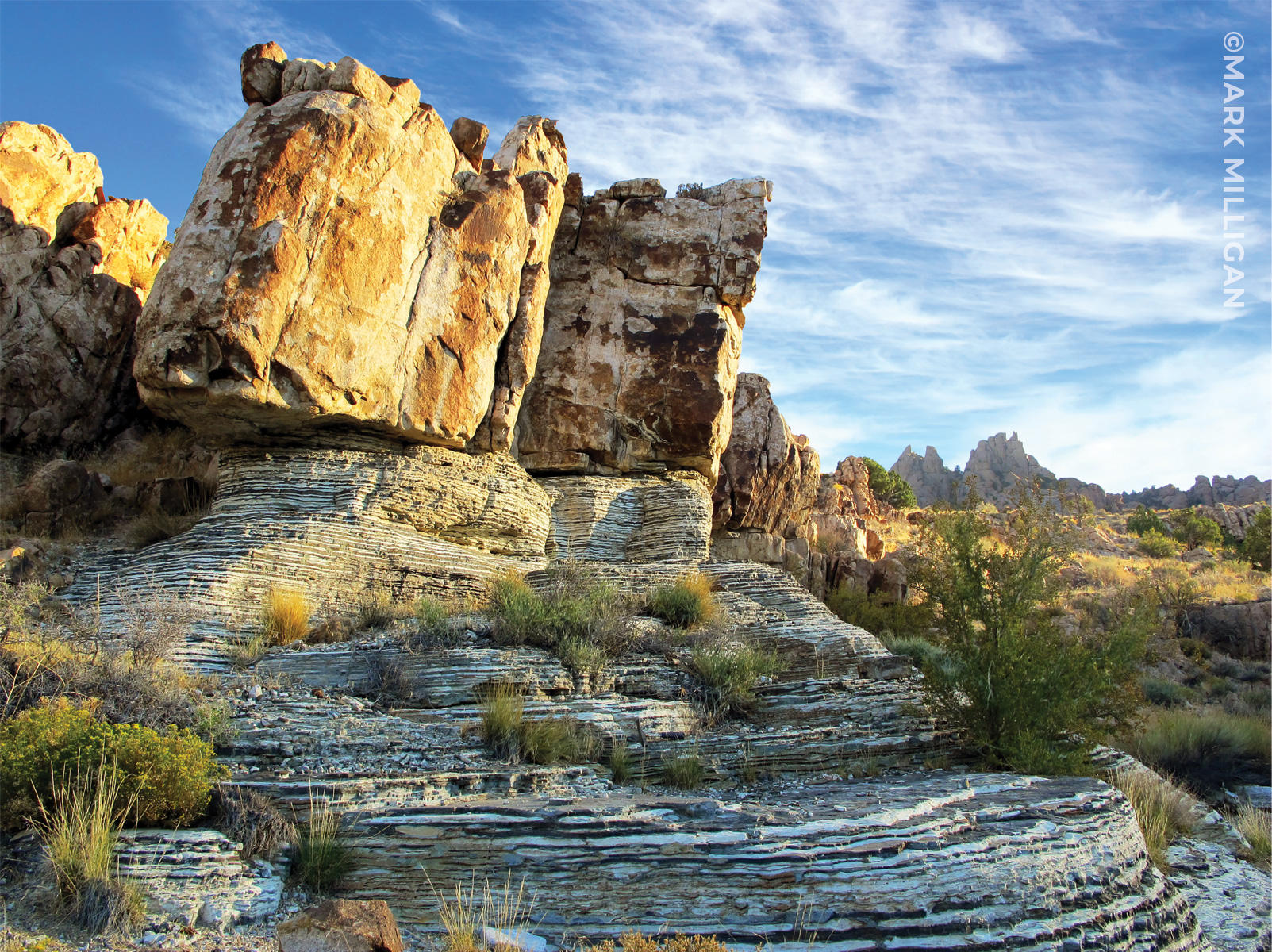Near the base of Notch Peak, pink Jurassic-age granite intrudes much older thinly bedded gray argillite and white marble of the Cambrian-age Marjum Formation. Deep in the Earth’s crust 170 million years ago, high heat and fluids from the granite metamorphosed the surrounding rock, turning limestone into marble and shale into argillite.
House Range, Millard County, Utah. Photo by Mark Milligan.










